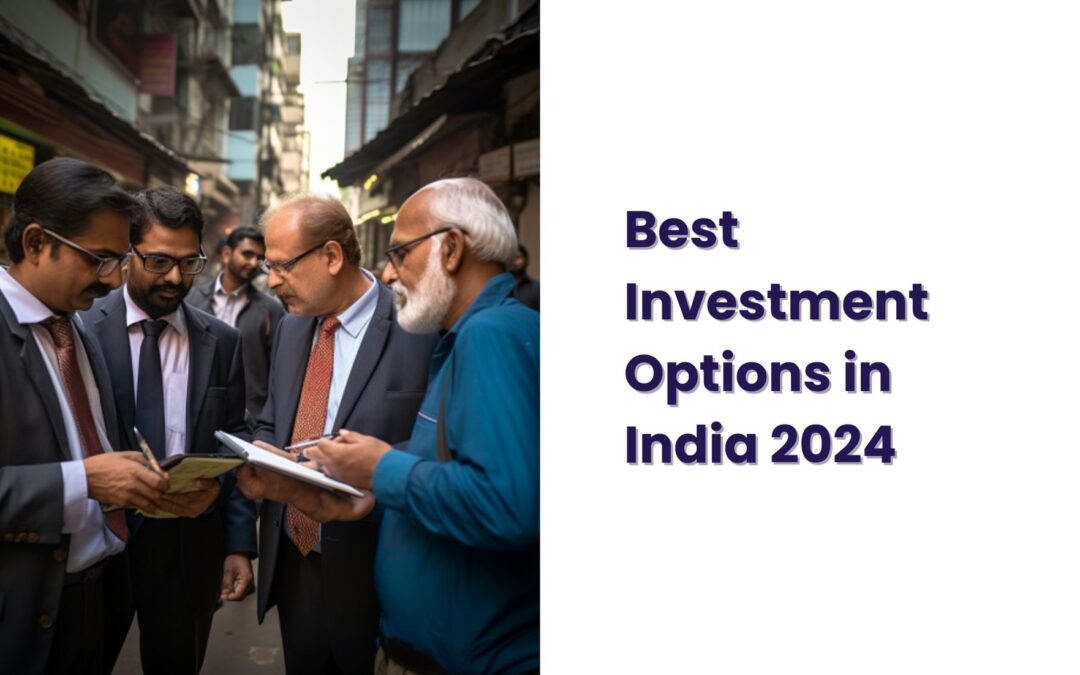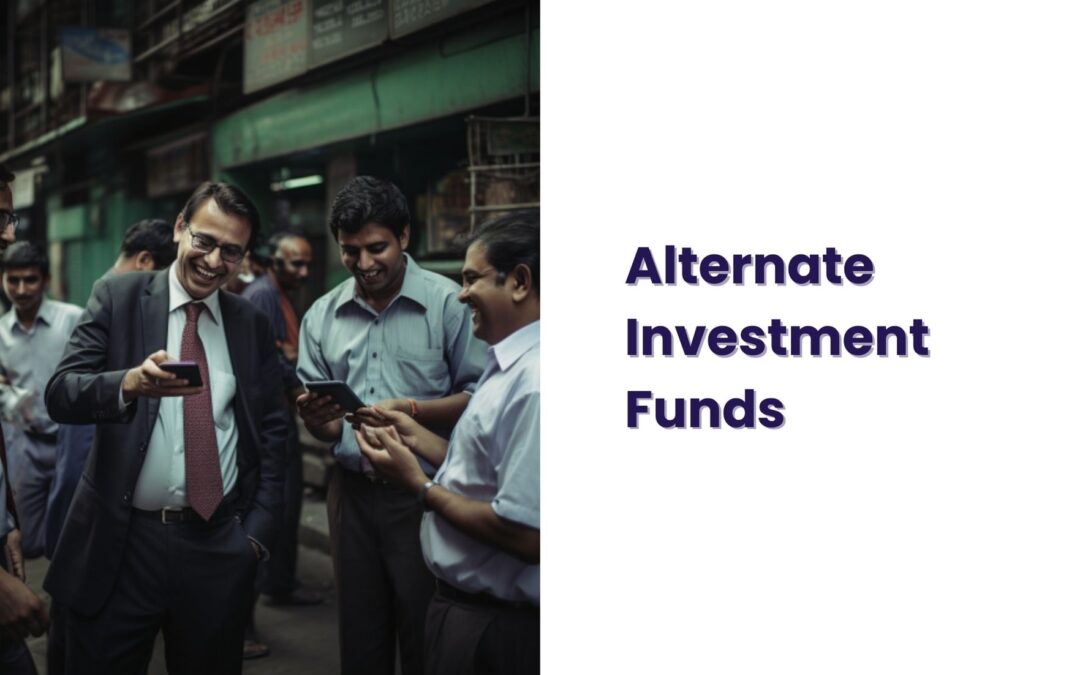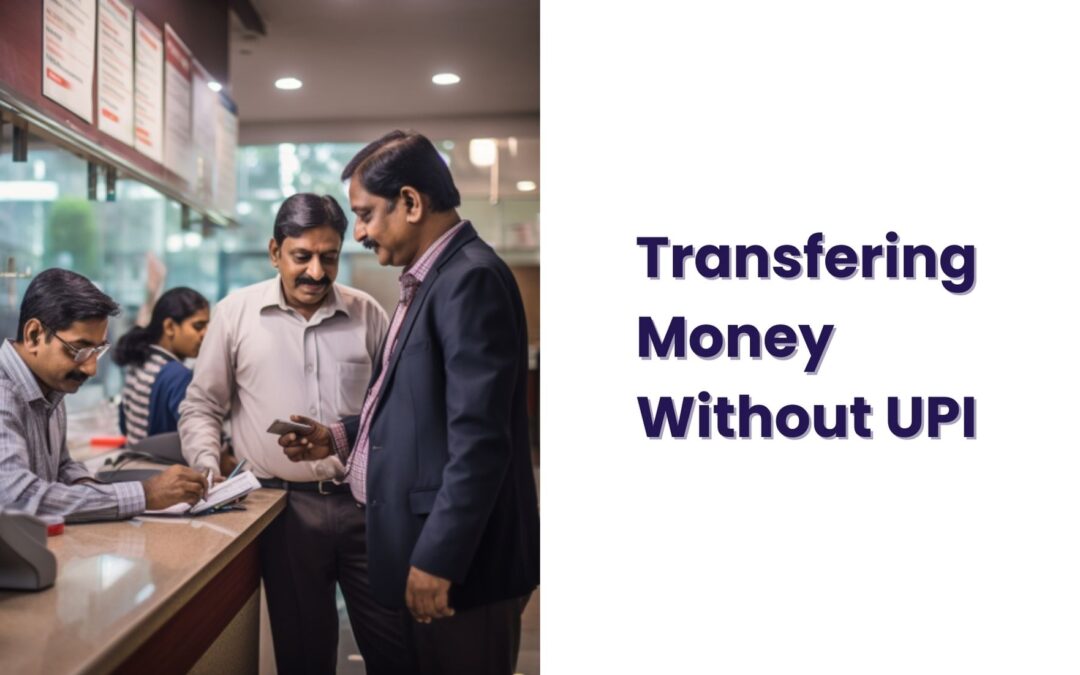
by Toulika | Dec 8, 2023 | Culture & Money, Investment, Savings
Explore the various aspects of environmentally conscious financial choices in the form of Green Investments and learn about the promising opportunities for investors.
In the dynamic world of finance, a paradigm shift is underway – one that aligns profits with environmental responsibility. This article delves into the realm of “Green Investments in finance, India,” shedding light on the burgeoning landscape of sustainable financial choices that not only benefit investors but also contribute to the greater good.
Do you want to save in 24k digital gold? Here is an amazing opportunity to grow your wealth by saving daily. Download the Jar App.
Exploring Green Investment Options
Eco-friendly Mutual Funds
Embark on a journey of responsible investing with eco-friendly mutual funds. These financial instruments pool resources to invest in companies committed to environmentally sustainable practices. The returns are not just monetary; they contribute to a greener and healthier planet.
Solar Energy Bonds
Illuminate your investment portfolio by considering solar energy bonds. These bonds fund solar projects, offering a unique blend of fixed returns and a positive impact on the environment. Investing in solar energy bonds is not just a financial decision; it’s a commitment to a cleaner and sustainable energy future.
Sustainable Agriculture Ventures
Dive into the heart of green investments by exploring sustainable agriculture ventures. Supporting eco-friendly farming practices not only ensures food security but also provides a fertile ground for financial growth. Discover the wealth in cultivating a sustainable and environmentally conscious agricultural future.
Renewable Energy Stocks
Empower your portfolio with the dynamic potential of renewable energy stocks. As the world shifts towards cleaner energy sources, investing in renewable energy stocks becomes not only a smart financial move but also a strategic alignment with the global push for sustainability.
Green Investments in Finance, India: A Lucrative Proposition
Government Initiatives
Explore how government initiatives in India are fostering a conducive environment for green investments. From tax incentives to policy support, discover how the government is actively promoting and rewarding investments that contribute to a greener and cleaner India.
Corporate Social Responsibility (CSR) Impact
Uncover the significance of corporate social responsibility in the realm of green investments. Many companies are now integrating sustainable practices into their operations, presenting investors with an opportunity to align their values with their financial goals.
Market Trends and Future Projections
Delve into the current market trends and future projections of green investments in India. Understand the trajectory of this evolving sector and position yourself strategically to harness the financial benefits of sustainable and ethical investment choices.
Frequently Asked Questions (FAQs)
What are the Risks Associated with Green Investments?
Investing always comes with risks, and green investments are no exception. While the environmental benefits are substantial, it’s crucial to be aware of market fluctuations and potential regulatory changes that may impact returns.
How Can I Start Investing in Green Mutual Funds?
To start investing in green mutual funds, approach reputable financial institutions or consult with a financial advisor. They can guide you through the process, helping you make informed decisions aligned with your financial goals and environmental values.
Are Green Investments Only for Environmentally Conscious Investors?
No, green investments are for everyone. While environmentally conscious investors may be drawn to the sustainability aspect, these investments offer financial benefits to all, making them a viable option for a diverse range of investors.
Can I Monitor the Environmental Impact of My Green Investments?
Yes, many financial institutions provide regular reports on the environmental impact of your green investments. These reports detail how your funds are contributing to sustainable initiatives, giving you transparency and accountability.
Are Green Bonds a Safe Investment Option?
Green bonds are considered relatively safe, as they are often issued by reputable institutions and backed by tangible assets. However, like any investment, it’s essential to conduct thorough research and assess your risk tolerance before making decisions.
How Do Green Investments Contribute to Climate Change Mitigation?
These investments contribute to climate change mitigation by channeling funds into projects that reduce carbon emissions, promote sustainable practices, and support the transition to renewable energy sources. This proactive approach aids in combating climate change at its core.
Conclusion
In the realm of finance, embracing “Green Investments” is not just a financial decision but a commitment to a sustainable and prosperous future. Navigate this landscape with confidence, armed with the knowledge of diverse investment options, government support, and the potential for both financial and environmental returns.

by Toulika | Dec 8, 2023 | Culture & Money, Investment, Savings
Learn about Public Provident Fund (PPF) interest rates, tax benefits, and how to make the most of this secure investment for your future financial well-being.
Investing wisely for the future is crucial, and the Public Provident Fund (PPF) stands as a reliable avenue for financial security. In this detailed guide, we’ll delve into the various aspects of PPF, shedding light on its features, benefits, and how it can shape your financial landscape positively.
Do you want to save your money in digital gold? Downloads the Jar App now.
Public Provident Fund (PPF)
Understanding Public Provident Fund (PPF)
Public Provident Fund, commonly known as PPF, is a government-backed savings scheme designed to encourage small savings among Indian citizens. Established with the aim of providing financial stability and security during retirement, PPF has become a cornerstone for many investors.
PPF Eligibility Criteria
To benefit from the PPF, one must meet specific eligibility criteria. Individuals, including minors, can open a PPF account. However, only one account per person is allowed, ensuring a fair distribution of benefits.
Opening a PPF Account
Opening a PPF account is a straightforward process. Visit designated banks or post offices, fill out the application form, and submit the required documents, including proof of identity and address. Once approved, you’re on your way to securing your financial future.
Public Provident Fund Interest Rates
One of the key attractions of PPF is its competitive interest rates. As of the latest update, the interest is compounded annually, providing a robust growth structure for your savings. Stay informed about the current rates to maximize your returns.
Tax Benefits of PPF
One of the standout features of PPF is its tax-friendly nature. Contributions made to PPF are eligible for tax deductions under Section 80C of the Income Tax Act. Additionally, the interest earned and the final maturity amount are exempt from income tax, making PPF an attractive investment avenue.
Frequently Asked Questions About Public Provident Fund (PPF)
What is the minimum and maximum investment in PPF?
The minimum annual deposit in a PPF account is Rs. 500, while the maximum is capped at Rs. 1.5 lakh. This flexibility allows investors of varying financial capacities to benefit from PPF.
Can I withdraw money from my PPF account before maturity?
Yes, partial withdrawals are allowed from the seventh year of opening the PPF account. However, certain conditions and limits apply.
Is the interest earned on PPF taxable?
No, the interest earned on PPF is exempt from income tax, contributing to its appeal as a tax-efficient investment option.
Can I extend my PPF account after maturity?
Yes, PPF accounts can be extended in blocks of five years after the initial maturity period of 15 years, providing a continued avenue for secure savings.
Are NRIs eligible to open a PPF account?
No, Non-Resident Indians (NRIs) are not eligible to open a new PPF account. However, if an individual becomes an NRI after opening a PPF account, they can continue to contribute until maturity.
How is the interest on PPF calculated?
The interest on PPF is calculated on the minimum balance in the account between the 5th and last day of each month, ensuring a consistent and fair calculation method.
How does the Public Provident Fund (PPF) contribute to long-term financial stability?
The PPF is designed to encourage regular savings, providing a secure avenue for individuals to accumulate wealth over time. With its competitive interest rates and tax benefits, PPF plays a crucial role in fostering long-term financial stability.
Can I open multiple PPF accounts to enhance my savings portfolio?
No, individuals are allowed only one PPF account in their name. This ensures fair distribution of benefits and encourages a broader demographic to benefit from the scheme.
What happens if I miss making the minimum annual deposit in my PPF account?
If you fail to make the minimum annual deposit of Rs. 500, your account may become inactive. Reactivating it involves paying a nominal penalty along with the pending deposits for the inactive years.
Is there a maximum age limit for opening a PPF account?
There is no maximum age limit for opening a PPF account. Individuals of any age can start a PPF account, making it an inclusive investment option for both the young and those planning for retirement.
Keeping track of your PPF account is easy. Periodic statements are provided by the bank or post office where you hold the account, detailing your deposits, interest earned, and the overall balance. Additionally, many financial institutions offer online platforms for convenient monitoring.
Conclusion
Investing in the Public Provident Fund (PPF) is a strategic move towards securing your financial future. With its attractive interest rates, tax benefits, and flexible terms, PPF offers a robust platform for individuals to build a financially stable tomorrow. Explore the potential of PPF and take a significant step towards a secure and prosperous future.

by Toulika | Dec 7, 2023 | Investment
Investing wisely is the key to financial success, and in a dynamic country like India, where opportunities abound, making the right investment choices is crucial. As we step into 2024, it’s essential to assess the best investment options available. This comprehensive guide will walk you through various avenues, helping you make informed decisions to secure your financial future.
Do you want to save your money in 24k digital gold? Download the Jar App now.
I. Introduction
A. Definition of Investment
Investment is the commitment of funds with the expectation of earning additional income or profit. In simple terms, it’s putting your money to work to achieve financial goals.
The financial landscape is diverse, offering a plethora of investment options. However, making informed choices is vital to mitigate risks and maximize returns. Let’s delve into the best investment options in India for 2024.
II. Types of Investments in Best Investment Options
A. Equities
1. Stock Market Overview
The stock market is a dynamic arena where shares of publicly traded companies are bought and sold. Understanding its basics is crucial for investors.
2. Risk and Reward in Equities
Equities come with inherent risks, but they also offer substantial rewards. It’s essential to strike a balance and assess your risk tolerance before venturing into the stock market.
B. Fixed-Income Investments
1. Bonds and Debentures
Fixed-income investments like bonds provide a steady stream of income. Learn how these instruments offer security and stability to investors.
2. Security and Stability in Fixed-Income Investments
In times of market volatility, fixed-income investments act as a safety net, providing stability and predictable returns.
C. Real Estate
1. Property as an Investment
Real estate has always been a favored investment avenue. Explore the benefits of investing in properties and how it adds value to your portfolio.
2. Long-Term Benefits of Real Estate Investments
While real estate may require significant initial capital, the long-term benefits, including rental income and property appreciation, make it a compelling option.
III. Mutual Funds – Best Investment Options
A. Understanding Mutual Funds
Mutual funds pool money from various investors to invest in a diversified portfolio of stocks, bonds, or other securities. Discover the advantages of this collective investment approach.
1. Diversification in Mutual Funds
Diversifying your investments is a risk management strategy. Mutual funds automatically provide this diversification, reducing the impact of market fluctuations on your portfolio.
2. Professional Management of Funds
One of the key benefits of mutual funds is the professional management of your investments by experienced fund managers.
A. Historical Significance of Gold
Gold has been a symbol of wealth for centuries. Uncover why it continues to be a reliable investment, especially during economic uncertainties.
1. Gold as a Safe Haven
In times of economic turmoil, gold often acts as a safe haven, protecting investors from market volatility.
Beyond gold, exploring other precious metals like silver and platinum can add diversification to your investment portfolio.
V. Government Schemes
A. Public Provident Fund (PPF)
1. PPF Features and Benefits
The Public Provident Fund (PPF) is a government-backed savings scheme with attractive features and long-term benefits.
2. Long-Term Wealth Creation with PPF
PPF not only offers tax benefits but also aids in long-term wealth creation, making it a popular choice for risk-averse investors.
B. Best Investment Options – National Pension System (NPS)
1. Retirement Planning with NPS
The National Pension System (NPS) is a systematic pension plan that assists in building a retirement corpus. Explore how it can be a cornerstone of your retirement planning.
2. Tax Benefits of NPS
In addition to retirement planning, NPS provides tax benefits, making it a strategic investment choice for those looking to save on taxes.
VI. Cryptocurrency
A. Emergence of Cryptocurrency – Best Investment Options
1. Understanding Cryptocurrency
The rise of digital currencies has been phenomenal. Gain insights into the world of cryptocurrency and its potential as an investment avenue.
2. Risks and Rewards of Cryptocurrency
While cryptocurrencies offer high returns, they come with considerable risks. Assessing your risk appetite is crucial before diving into this volatile market.
VII. Risk Management Strategies
A. Diversification
1. Importance of Diversifying Investments
Diversification is a key strategy to spread risk. Learn why having a mix of investments is crucial for long-term success.
2. Building a Balanced Portfolio
Balancing high-risk, high-reward investments with more stable options ensures that your portfolio can weather market fluctuations.
B. Risk Tolerance Assessment
1. Knowing Your Risk Appetite
Understanding your risk tolerance is the foundation of sound investment decisions. Assess your comfort level with risk before crafting your investment strategy.
2. Aligning Investments with Risk Tolerance
Tailoring your investments to match your risk tolerance helps create a portfolio that aligns with your financial goals and personal comfort.
VIII. Market Trends and Economic Outlook
A. Analyzing Current Market Trends
1. Impact of Economic Factors on Investments
Staying informed about economic indicators and market trends is essential for making strategic investment decisions.
Regularly monitoring market trends allows investors to adapt to changing conditions and capitalize on emerging opportunities.
IX. Tax Planning and Investment
A. Importance of Tax Planning
1. Tax-Efficient Investment Strategies
Efficient tax planning is crucial for maximizing returns. Explore strategies to minimize tax liabilities while optimizing your investment portfolio.
2. Maximizing Returns through Tax Planning
Striking a balance between risk and returns becomes even more critical when considering the tax implications of your investments.
X. Future Predictions and Emerging Sectors
A. Emerging Investment Sectors in 2024
1. Technological Innovations and Investments
Explore the tech-driven sectors that are poised for growth in 2024 and beyond.
2. Sustainability and Green Investments
The increasing focus on sustainability presents investment opportunities in green sectors. Learn about environmentally conscious investments that align with future trends.
XI. Conclusion
A. Summarizing Key Points
In conclusion, navigating the vast landscape of investment options in India requires a strategic approach. By understanding the diverse choices available and aligning them with your financial goals and risk tolerance, you can build a robust investment portfolio.
Make 2024 the year of smart investments. Stay informed, assess your risk appetite, and diversify your portfolio to seize opportunities and secure your financial future.
FAQs
What are the best long-term investment options in India?
Long-term investment options include equities, real estate, and government schemes like PPF and NPS.
Is cryptocurrency a viable investment in 2024?
While cryptocurrencies offer high returns, they come with significant risks. Investors should carefully assess their risk tolerance before investing.
How can I assess my risk tolerance?
Assessing risk tolerance involves evaluating your comfort level with market fluctuations and potential financial losses. It’s a crucial step in building a personalized investment strategy.
Are government schemes like PPF and NPS safe investments?
Yes, PPF and NPS are considered safe investments as they are backed by the government and come with attractive features and benefits.
What is the role of market trends in making investment decisions?
Monitoring market trends helps investors adapt to changing conditions and capitalize on emerging opportunities. Staying informed is essential for making smart investment decisions.

by Toulika | Dec 7, 2023 | Culture & Money, Investment, Savings
In the dynamic realm of financial markets, investors are constantly seeking innovative avenues that offer both diversification and lucrative returns. One such avenue that has gained prominence in India is Alternate Investment Funds (AIFs). This article delves into the intricacies of AIFs, exploring their types, regulatory framework, benefits, challenges, and future outlook.
Do you want to save in 24k digital gold? Download the Jar App now.
Types of AIFs or Alternate Investment Funds
In India, AIFs are categorized into three groups: Category I, Category II, and Category III. Category I includes funds that support startups and small and medium enterprises, Category II comprises real estate and private equity funds, while Category III focuses on hedge funds and other forms of sophisticated trading. Each category has distinct characteristics and appeals to a different set of investors.
Regulatory Framework
The Securities and Exchange Board of India (SEBI) plays a pivotal role in regulating AIFs. SEBI’s guidelines ensure transparency, investor protection, and the orderly growth of the AIF sector. AIF managers must adhere to compliance requirements, fostering a secure investment environment.
Benefits of Investing in Alternate Investment Funds
Investing in AIFs provides diversification opportunities, reducing the impact of market volatility on a portfolio. Moreover, AIFs often exhibit the potential for higher returns compared to traditional investment options. They also offer risk management strategies, contributing to a well-rounded investment portfolio.
Challenges and Risks
While AIFs present enticing prospects, investors must be cognizant of associated risks. Market risks, liquidity risks, and unforeseen events can impact AIF performance. This section explores these risks and provides insights into effective mitigation strategies.
Analyzing the historical performance of AIFs in India reveals trends that guide investors in making informed decisions. Understanding the market dynamics and emerging trends is crucial for anticipating potential investment opportunities.
How to Choose the Right Alternate Investment Funds
Selecting the right AIF involves a careful evaluation of investment goals, risk tolerance, and the track record of AIF managers. This section guides investors on the factors to consider when choosing an AIF that aligns with their financial objectives.
Case Studies
Examining successful and unsuccessful AIF investments provides valuable lessons. Real-world case studies offer insights into the factors contributing to success or failure and help investors make prudent decisions.
Tax Implications
Investors need to be aware of the tax implications associated with AIF investments. Understanding how AIF returns are taxed ensures that investors can optimize their gains and comply with taxation regulations.
Future Outlook
As the AIF landscape evolves, this section explores the growth prospects and anticipated regulatory changes. Investors can gain a forward-looking perspective on the AIF market, enabling them to adapt their strategies accordingly.
Conclusion
In conclusion, AIFs offer a unique and dynamic investment avenue in the Indian financial landscape. By understanding the categories, regulatory framework, benefits, and risks associated with AIFs, investors can make informed decisions that align with their financial goals.
FAQs on Alternate Investment Funds
What are the minimum investment requirements for AIFs?
AIFs typically have varying minimum investment requirements based on their category. It is advisable to check with the specific AIF manager for accurate details.
Can foreign investors participate in Indian Alternate Investment Funds?
Yes, foreign investors are permitted to participate in Indian AIFs, subject to regulatory guidelines.
How often are AIFs required to disclose their portfolio details?
AIFs are required to disclose their portfolio details on a periodic basis, as mandated by SEBI.
Are AIFs subject to market regulations?
Yes, AIFs are subject to market regulations governed by SEBI to ensure investor protection and market integrity.
What role does SEBI play in monitoring AIF activities?
SEBI plays a crucial role in regulating and monitoring AIF activities to maintain transparency and safeguard investor interests.

by Toulika | Dec 6, 2023 | Culture & Money, Savings
In the fast-paced world of digital transactions, UPI (Unified Payments Interface) has become a household name. However, despite its widespread use, there are situations where you might need alternatives to transfer money without relying on UPI. Whether you’re facing technical glitches, prefer diverse options, or encounter situations where UPI isn’t viable, this article explores various methods to help you seamlessly transfer money.
Do you want to save money in 24k digital gold?
Download the Jar App now.
Introduction
In an era dominated by technology, the ability to transfer money swiftly and securely is crucial. UPI has undoubtedly revolutionized the way we exchange funds, but what happens when it’s not the most suitable option? Let’s delve into alternative methods that offer flexibility and cater to diverse preferences.
Challenges with UPI
While UPI is a convenient tool, it’s essential to acknowledge its limitations. From connectivity issues to transaction limits, users often encounter challenges that warrant exploring alternative money transfer avenues.
Alternative Methods
Bank Transfers
Traditional bank transfers remain a steadfast option for those seeking reliability. With well-established procedures, bank transfers ensure your money reaches the intended recipient securely. However, the process might not be as swift as UPI transactions.
Mobile Wallets
Mobile wallets have gained popularity for their user-friendly interfaces and quick transactions. They provide a convenient way to transfer money without the need for UPI. Security measures, such as PIN protection and two-factor authentication, enhance the overall safety of transactions.
Online payment platforms offer a range of features for seamless money transfers. From instant transactions to diverse payment options, these platforms serve as viable alternatives to UPI, catering to various user preferences.
Using Debit/Credit Cards
Your trusty debit or credit card can serve as a reliable tool for money transfers. Whether it’s within your country or internationally, these cards offer flexibility. However, it’s crucial to be mindful of security measures and potential fees.
Cryptocurrency Transfers
For the tech-savvy, cryptocurrencies present an intriguing alternative. While not universally accepted, the decentralized nature of cryptocurrencies offers a borderless and potentially cost-effective option for money transfers.
Peer-to-Peer (P2P) Transfers
P2P transfer services connect users directly for seamless transactions. Apps and platforms facilitating P2P transfers can be an excellent alternative when UPI is unavailable or inconvenient.
Cross-Border Transfer Options
When transferring money internationally without UPI, consider specialized services that cater to cross-border transactions. Evaluate factors such as fees, exchange rates, and transaction speed to make an informed decision.
Security Measures
Regardless of the method chosen, prioritizing security is paramount. Use secure channels, employ two-factor authentication, and stay vigilant against potential fraud. Understanding the safety features of each method ensures a worry-free money transfer experience.
Cost Comparison
Different money transfer methods come with varying costs. Compare fees, exchange rates, and any hidden charges associated with each option. A cost-effective approach ensures you get the most value from your money transfers.
User-Friendly Apps
Discovering user-friendly apps can make a significant difference in your money transfer experience. Look for apps with intuitive interfaces, responsive customer support, and transparent processes for a hassle-free transaction journey.
Future Trends in Money Transfer
As technology evolves, so do money transfer options. Stay informed about emerging trends, such as blockchain technology and digital wallets, to anticipate the future landscape of financial transactions without UPI.
Conclusion
In a world where financial transactions drive the pace of daily life, having alternatives to UPI is essential. From traditional bank transfers to cutting-edge cryptocurrency options, each method has its unique advantages. By understanding the diverse options available, you empower yourself to make informed decisions based on your specific needs and preferences.
FAQs
Is it safe to transfer money without using UPI?
Yes, it can be safe, provided you follow recommended security measures for the chosen method.
Are there fees associated with alternative money transfer methods?
Fees vary between methods, so it’s essential to compare and choose the most cost-effective option.
Can I transfer money internationally without using UPI?
Yes, several methods cater to cross-border transfers without relying on UPI.
Are there any future technologies that might impact money transfers?
Emerging technologies like blockchain and digital wallets are expected to shape the future of money transfers.
What should I do if a money transfer using an alternative method fails?
Contact customer support for the specific method you used to resolve any issues promptly.





